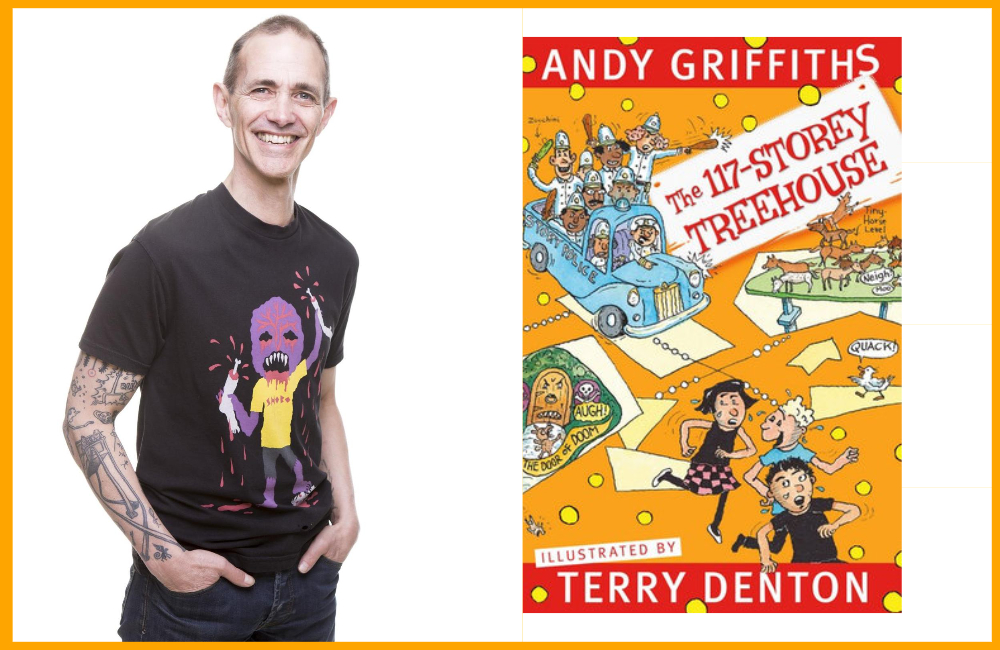
Multiple generations of children have grown up with the books of Andy Griffiths and Terry Denton. From their first book Just Tricking!, released in 1997, to their latest The 117-Storey Treehouse – which was awarded the ABIA award for the Book of the Year for Younger Children in 2020 – their funny, often absurd stories continue to surprise and delight.
The 117-Storey Treehouse is the ninth in the Treehouse series, and Andy says he’s amazed at the new ideas they’re able to pull out of the series. The original book had a 13-storey treehouse, and they’ve progressively added 13 more storeys with each book, with the 130-storey book to come out in October 2020. They’re now staring down the barrel of a 13-book series, something Andy says used to be a joke but has quickly become reality.
“We didn’t want to jump the shark with it, but a few books ago, we realised it’s impossible to jump the shark with this series, because it was jumping the shark right from the beginning. That, I think, is a large part of the appeal for the kids; how ridiculous can you go? I’m confident we’ve got another three books in us before we have to move on.”
Having written humour for kids since the 1990s, Andy says there are some extremely subtle differences writing now – but their target demographic, of children between ages five to 12, still finds the same things funny as ever.
“They appreciate certain types of humour, they love incongruous humour, where you place things that aren’t meant to be put together. They love the playful aspect of it. The way the pictures and the text play with words and ideas is very much what any child is doing in order to make sense of language and make sense of the world.”
The Treehouse series uses a lot more visual storytelling than the Just! series, and Andy says this has been a deliberate strategy.
“The Treehouse was a result of 20 years research and development into our audience, researching the audience and really getting to know what tickles them and developing our own skills to be able to deliver something that conveys the story,” he says. “It’s almost like they’re just absorbing through their eyes, they’re getting a reward for every page.”
“If I look at the earlier books, there’s a lot more words, and this generation may well be more attuned to the visual content. I think if you look at the really big children’s sellers such as Wimpy Kid and Dog Man, the graphic novel has well and truly arrived, we accidentally kind of fell into that. I think ours is a hybrid – I guess that’s what a graphic novel is.”
To keep up that humour with fewer words, Andy says it’s key to make every word count. Andy, Terry and Andy’s wife Jill all work on each book for about a year.
“It’s an endless revision process where we’re paring down words, we’re paring down paragraphs, we’re extracting the absolute necessary information and no more, and getting the timing right on these things.” he says. The illustrations help with this task, because little stories can be told within the pictures.
“A lot of revision goes into getting that humour there,” he says. “We probably start with about 100 levels for each book, and pare them down to the 13 that make us laugh and/or help us tell the story.”
About us
Contact us